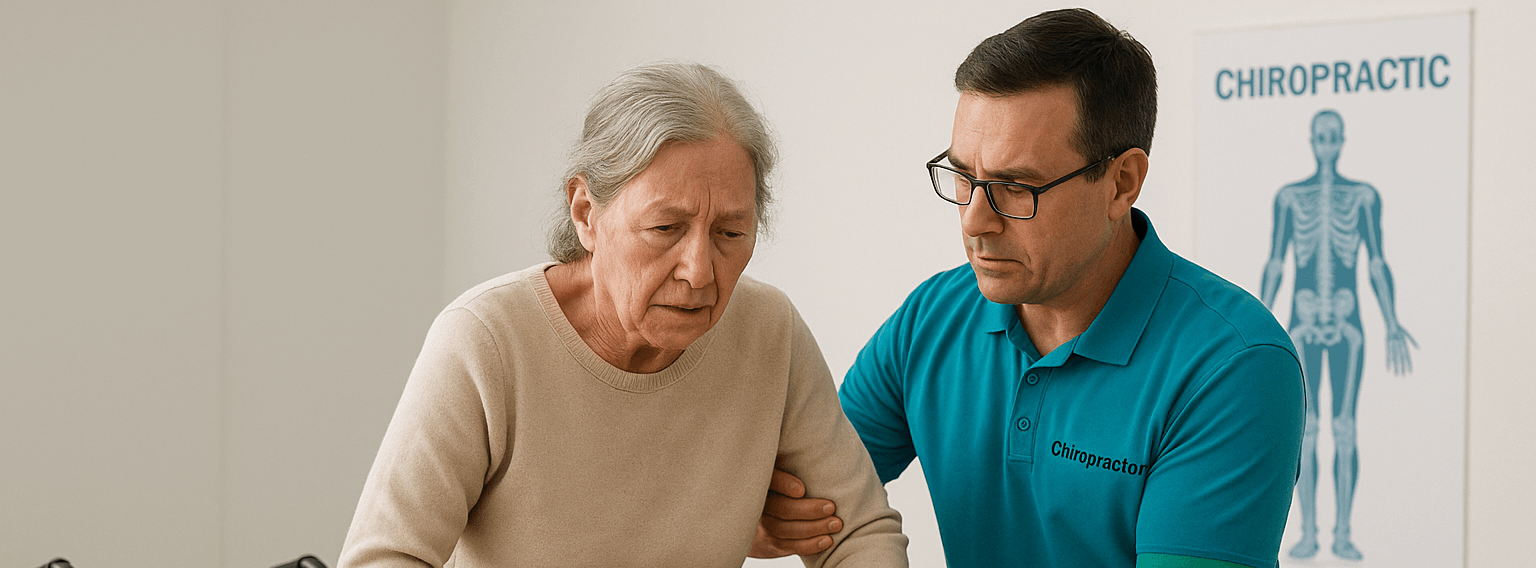Pregnancy changes your body — fast. As your baby grows, so do the demands on your spine, muscles, and joints. Postural strain is one of the most common (and overlooked) causes of pregnancy-related discomfort. The good news? With a few intentional posture habits, you can reduce pain, protect your body, and prepare for a smoother postpartum recovery.
Jump to:
TLDR – Quick Guide
- Distribute weight evenly between both feet
- Avoid arching your lower back (no swayback stance)
- Avoid sitting on the sofa. Instead, sit on a firm chair or stool that is tall enough to get your hips higher than your knees. Use a seat wedge to reduce slouching which compresses your abdomen.
- Avoid standing or sitting for long periods without breaks
- See a chiropractor for prenatal and pregnancy alignment care
Why Pregnancy Affects Your Posture
Hormonal Changes and Joint Instability
During pregnancy, your body produces a hormone called relaxin, which softens ligaments to prepare for childbirth. While helpful during delivery, this hormone can also make joints — especially in your lower back and pelvis — more unstable, increasing your risk of misalignment.
Shifting Center of Gravity
As your belly grows, your body’s center of gravity moves forward. Without proper awareness, this shift can cause a swayback posture: arching the lower spine, pushing the abdomen forward, and straining the back.
Top 7 Pregnancy Posture Tips for Comfort and Support
1. Stand Tall and Balanced
Avoid locking your knees or leaning into one hip. Keep your feet hip-width apart and your weight distributed evenly. Engage your core muscles gently to support your lower back.
Why it matters: Proper alignment reduces pressure on your spine and hips, minimizing daily fatigue.
2. Avoid the Swayback
It’s common to compensate for a growing belly by leaning backward. If you do this excessively, it is a sign that spinal misalignments are present which need addressing by a professional. Forcing your spine and pelvis into a neutral position can help but does not solve the underlying issue.
Temporary Fix: Do pelvic tilts and core activation exercises approved for pregnancy.
3. Sit With Support
Choose chairs with firm seat (wooden, plastic or metal). A small amount of cushioning is ok but something like a sofa or anything that your backside can sink into will make your spine slouch and compress your chest and abdomen. Sit upright, keep both feet flat on the floor, and avoid crossing your legs for long periods.
Fix: Use a footrest if your feet don’t fully touch the floor.
4. Sleep on Your Side
Sleeping on your side with a height adjustable keeps your spine aligned and reduces pelvic stress.
Fix: Avoid sleeping on your back during the second and third trimesters to reduce pressure on major blood vessels.
5. Use Proper Lifting Technique
Bend at the knees, not your waist. Keep items close to your body and avoid twisting as you lift.
Fix: Ask for help when lifting anything heavier than 20 lbs — even moderate strain can misalign your pelvis during pregnancy.
6. Move Frequently
Whether working at a desk or relaxing at home, avoid sitting or standing in one position too long. Get up and stretch or walk every 30–60 minutes.
Fix: Gentle prenatal yoga or walking can keep your body mobile and posture-aware.
7. See a Prenatal Chiropractor
A chiropractor trained in prenatal care can help balance your pelvis, improve spinal alignment, and ease pressure on your joints. Chiropractic adjustments are safe during pregnancy and often recommended by midwives and OB-GYNs.
Fix: Look for a practitioner trained in postural assessment and realignment such as the Advanced BioStructural Correction method for pregnancy care.
Key Takeaways
- Pregnancy changes your posture due to hormonal shifts and weight distribution
- Maintaining a neutral spine and avoiding swayback helps prevent back and pelvic pain
- Ergonomic sitting, side-sleeping, and proper lifting are essential daily habits
- Gentle movement and stretching support joint health and postural control
- Prenatal chiropractic care can realign your body and improve comfort during pregnancy
FAQs
1. Is poor posture during pregnancy harmful?
Yes. Poor posture can lead to chronic back pain, pelvic misalignment, and even complications during delivery or postpartum recovery.
2. When should I start focusing on posture during pregnancy?
As early as the first trimester. The sooner you build posture awareness, the more comfortable your pregnancy will be.
3. Can I do exercises to help with posture during pregnancy?
Absolutely. Pelvic tilts, prenatal yoga, and breathing exercises can support alignment — always check with your care provider before starting new routines.
4. Is chiropractic care safe while pregnant?
Yes. When done by a chiropractor experienced in prenatal care, it’s safe and can provide significant relief from postural stress.
5. Do I need special furniture or gear?
A really good chair, seat wedge, and an adjustable pillow can make a noticeable difference in your comfort and posture during pregnancy. Specialist seat wedges and adjustable pillows can be bought from our clinic or found online at.






